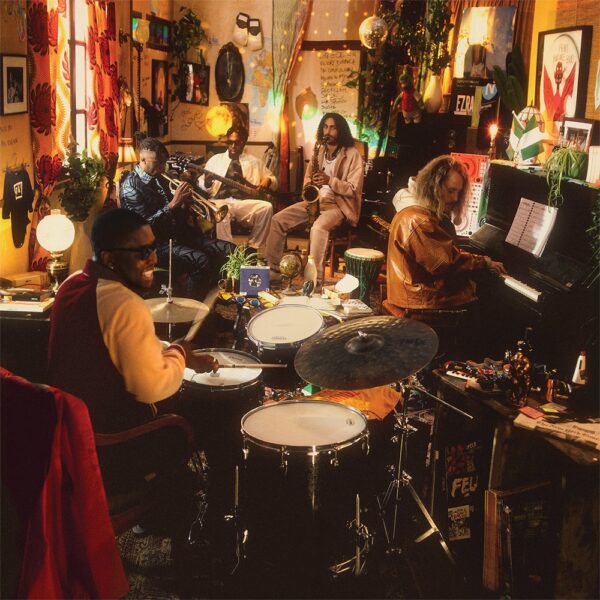It takes Femi Koleoso from Ezra Collective mere seconds to transmit his aura of positivity – even through Zoom. I call the drummer of the Londoner quintet just after the release of their sophomore record, Where I’m Meant To Be. The music is shaped by the band’s love for improvisation and Jazz. It radiates joy and playful musical confidence more than anything. “I am happy and joyful and tired and exhausted”, Femi says with a grin on his face. Things are going well for the collective made up of Femi’s brother TJ Koleoso on bass, Joe Armon-Jones on keys, trumpet player Ife Ogunjobi, and saxophonist James Mollinson.
After eighteen months, the record finally saw the light of day. Even though in theory, there was more time to get down into the nits and grits of the album, Ezra kept their improvisational and jam session driven vibe alive. Femi tells me that he just listened back to the record now when the test pressing came in. “I am not romantic like that”, he explains his tendency to hop onto the next thing right away. “Once its finished, its done. That was the moment. It was documented in the record, real and honest. Let’s keep moving.”
Joy as a State of Heart
There is no melancholy in the way Femi talks writing and creating. The emotion diving the Ezra Collective is joy and the feeling belonging. Together the five-piece created a space to take refuge from the rough reality of growing up in London – music and their recording studio. The recording studio has been a haven for Femi and his fellow bandmates since their school days. Ezra’s groovy, warm, and jazz-inspired sound stems from the importance and that feeling of belonging. It echoes in the notes of the music.
Joy is a recurrent theme during our interview. To Femi, joy is a state of heart rather than something sparked by certain events. “I am joyful. That is something that’s in my heart. It does not mean that I am happy every single moment of the day. There is a difference between happiness and joy.”
Music as a Vehicle of Joy
Femi found that joy through music, through playing the drums as well as through great music from other artists. He tells me about a moment when he was dancing with a friend in Miami to a Black Coffee DJ set: “I was dancing hard and sweating so much. It was one of the best nights of the year. That kind of joy is very special. For me, there is nothing quite as special as the feeling of when your heart goes like, this is where I wanna be right now. I get that feeling, both from music I have written and other music.”
“My main goal when I am on stage with Ezra is to take people to a place where it is a little but like you might not have woken up feeling on top of the world, but for the time being on stage, I will try to make you feel exactly like you are.”
Where I’m Meant To Be, reflects those moments of joy and belonging the artist is referring to. It follows in the footsteps of You Can’t Steal My Joy, the debut record by the band that set the tone for the kind of music they make and the kind of feeling they want to evoke.
To the Beat of the Drum

Photo by Aliyah Otchere
Today, Femi looks like he has been this radiant and joyful all his life, but of course that was not the case. Growing up in London as a Black youth was not always easy and London can be a very negative place. “I love London and I wouldn’t want to live anywhere else”, Femi clarifies. “But you cannot ignore some of the negative things that you are surrounded by every second of the day. Sometimes you can use your heart and your mind and make the something positive even in negative places. I think I discovered that when I was three years old and picked up drumsticks for the first time.”
London occupies a special place in the drummer’s heart. Ezra Collective grew from the soil of the city. His fellow band members are schoolmates that have become like family and the music is shaped by collaboration with artists from the local jazz and RnB scene.
Happiness and Joy
Where I’m Meant To Be does not refer to London in particular. Yes, that is the place where the band is meant to be, but the record speaks more to a metaphorical place. A state of heart and of mind that they are thriving for. It comes from a place of deep gratefulness, which is something that Femi learned during the pandemic. “I always had joy in my heart, but that joy is fused with gratefulness now”, he says, and I ask whether one can be truly joyful without being grateful. He grins and takes a moment to reply. “No, I think you cannot access deep joy if you are not grateful. Comparison is the thief of joy, and it breathes from a place of ungratefulness. If you are really grateful you do not need to compare to others. ” The song Ego Killah underlines the message of the drummer that comparison will kill your joy.
“I stay joyful even in difficult times. That comes down to the difference between joy and happiness. In difficult times, I am not happy. But I still have joy in my heart – the feeling that it will get better. Joy is always with me. Tomorrow I might not be happy, but I am joyful and grateful, and I am where I am meant to be.”
The utter positivity of the band’s sound and of Femi is infectious. It is not like they are oblivious to the problems and injustices of the world, but they choose to fight their battles with joy at the center. Always coming from a place of gratefulness, hope, and deep love for music. “Hope and joy are similar words. Joy is knowing in your heart that there is something great for you tomorrow and hope is believing in your heart. I guess joy is a bit more present and hope is a bit more about the future.”
Community and Collaboration
Community plays a big role in finding access to that deep joy, that Femi found. At the moment, there is a huge magnifying glass on the Londoner community of thriving jazz, RnB, and neo-soul acts like Nubya Garcia, KOKOROKO, Moses Boyd, Pip Millett, Jorja Smith, just to name a few. “It feels special to be part of the community because there is so much greatness here. They are like family to me. I struggled through jazz standard with Nubya. Moses used to help me with my homework to get into jazz school.”
“When I play with a London or UK-based artist, we tend to have a similar musical upbringing. We speak a musical language. There is something beautiful about working with an artist who grew up somewhere else. Making those different musical languages work.”
While Ezra Collective find most of their inspiration and collaborators in the local circles, the band includes their first feature with a non-UK based/raised artist on the record. The opening track, Life Goes On, features no other, but the Zambian artist Sampa the Great who herself released a new record this year, As Above, So Below. Working with Sampa, a longtime friend of Femi, was great he tells me. “We made a song that had this West African Fela Kuti sound, some South African house references, and that Lauryn Hill Hip Hop energy. Sampa was the person who encapsulated all of those elements. I just sent the music over to Zambia, where she was staying at that time, and she sent me the song. The rest is history. It was perfect right away, you know what I’m saying? ” And yes, I do.
Paying Homage

“Where I’m Meant To Be” Album Cover
Where I’m Meant To Be alongside of the prevalent theme of joy, is a tribute to the musical influences of the band. Femi Koleoso cites the drummer Tony Allen as one of his main inspirations. He pays homage to the Fela Kuti’s drummer in the skit at the beginning of No Confusion featuring Kojey Radical.
The album cover is a reference to Thelonious Monk‘s record Underground. Femi does not succumb to the pressure of trying to live up to some fantastic ideal that we set ourselves to achieve. Instead, he draws the inspiration from another artist and fuses it with his own style. “I am not trying to be you, but I am proud that your record is in my record collection, you know.” Femi Koleoso actually met Tony Allen and used to travel back and forth between London and Paris on the night bus to practice with the him, but that is a story he has told several times already.
A Journey to Outta Space
On the record, the titles and the video play a big role. As Ezra’s music is largely instrumental, titles allow the band to give some context to their art. “They are supposed to make people understand where we are coming from. The words that are specific and vague at the same time. Like that, people can make their own decisions about what they mean.”
“The album is a journey and the songs are part of that journey. Sometimes you have a victory, sometimes you feel like you are alone and need to remember that you belong somewhere, sometimes you become your biggest enemy. They are all moments on the journey and that journey ends in outta space. ” Outta Space. What does Femi mean by that, I wonder. It is a reference to another one of the band’s inspirations, Sun Ra, whose songs they have covered on their albums. “Outta space has something so mystical about it. No one really gets it,” Femi explains. “No one knows what’s out there. I don’t know what the future holds for Ezra Collective, but the journey is not finished. That’s why the record ends in outta space.”
Where Boxing and Jazz Meet
During our short interview slot of thirty minutes, Femi Koleoso and I discussed joy on a philosophical level and went to outta space with their music. Just before we are about to end the call, I tap into another interesting aspect of the record. Victory Dance comes with a music video showing the band playing in a boxing ring. “It is a metaphor for something that sometimes looks very negative becoming beautiful. Fighting is negative, but boxing is beautiful when it is done well. On the outside, someone who looks like me and sounds like me, quite often, the world looks at me and sees something negative. But the closer you look it becomes something beautiful.”
Boxing as a sport has also held huge importance in the Civil Rights Movement in the United States during the 60s. Malcom X, Martin Luther King, Miles Davis, came together at the boxing matches of Muhammad Ali. “Basquiat spent a lot of time painting jazz musicians and boxers. They represented Black success at that time. We are tapping into that tradition with ‘Victory Dance’. The nature of boxing is very similar to jazz music. You have to think and act and improvise in the moment. Someone plays a chord or throws a punch, and you react to that. I love that synergy.”
Where I’m Meant To Be is out now via Partisan Records.



